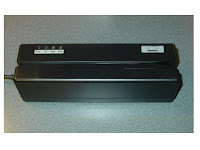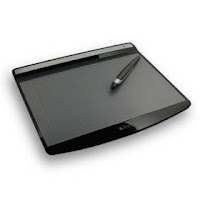Magnetic Stripe Readers: At POS terminals, ATMs and in security applications
Graphics Tablet: Inputting freehand drawings or retouch photographs
MICR (Magnetic ink character recognition):
OMR (Optical Mark Reader): Inputting pencil marks on a form such as a school register, candidate exam answers, any application involving input of a choice of options
OCR (Optical character reader): Inputting text to a computer ready for processing by another software package such as word processors, spreadsheets, databases etc.
Light Pens: Where desktop space is limited, it is used instead of a mouse or for drawing applications where a graphics tablet might be too big.










